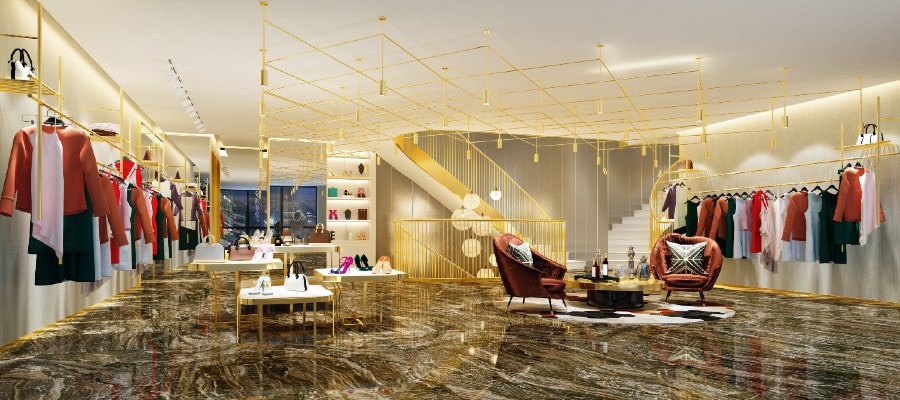Retail & Distribution
Clienteling in Luxury Retail
4 augustus 2017
Since the year 2000, revenues in luxury retail have steadily increased. While this suggests that the sector is strong, the threat of higher taxes, counterfeiting, and product overexposure are just some of the key issues that may hurt luxury retailers in the coming years. In order to minimise the damage from these external factors, retailers need to continue to deliver a higher quality of service. Careful distribution, smart marketing, and effective product differentiation are just some of the ways in which businesses can ensure another prosperous year.
In order to address some of the most pertinent challenges associated with maintaining a luxury business,many companies are turning to Clienteling as the solution. Clienteling is defined as:
“A system to manage customers engagement business process for bringing customers in to your store,
providing an exceptional in-store shopping experience, and keeping your customers coming back for more.”
But the question on many a lip is how does Clienteling work in the real world ? How can it deliver real business value and continuously improve not only the experience for your customers, but build loyalty, increase customer spend and grow revenues? Today, we take a look at how Clienteling is being used to solve real business challenges.
The Challenge: 47% of customers highlight poor knowledge of store associates as the most disliked experience when in a store.
Managing the shift in the retailer/customer relationship is vitally important for luxury retailers to continue to thrive. When purchasing online, customers are accustomed to websites remembering the details, their preferences, products they’ve looked at before but not purchased, and even suggestions of similar items they may like. Mirroring this service in a physical store isn’t just an indulgence, it’s demanded by customers.
Remember the old-time shopkeeper who knew his customers so well that they could walk in and order “the usual” and their order was being put together before the customer had even opened their mouth? There are very few who have experienced this kind of customer service, but it’s an interaction that many of us would love, and retailers are now looking to emulate these traditional local values on a much grander scale in order to facilitate both customer loyalty and increase revenues (read story).
Boucheron is a prime example of a luxury brand that is using clienteling to instill a customer-centric shopping experience across their stores. By equipping their sales associates with iPads, the disconnect between the customer and the associate has all but been eliminated.
At the touch of a button, the associate is armed with the knowledge they need to personalize every individuals experience within the store. They know whether the customer has opted in, their shopping behaviors, what shops from around the world they purchase from, what they’ve said to friends on social media about their shopping experiences with that brand, items in their wish list and more. This kind of one-on-one knowledge mimics that of the traditional shopkeeper, but on a global scale. Now when a Boucheron customer enters any Boucheron store, they can expect to be treated as if it’s their local store, even if it’s the first time they’ve visited.
The Challenge: 75% of consumers continue to receive campaigns on a product they have already purchased
Being contacted about a product after you’ve purchased it can be one of the most frustrating things a consumer can experience, especially when that item has just gone on sale days after you bought it. Clever use of Clienteling and data collection can not only prevent customers from being exposed to irrelevant marketing material, but it can also be used to encourage extra spending.
Take for example luxury shoe retailer Roger Vivier who uses data collection and digital communications to let an undisclosed few know about their invisible sale.
Those in the know receive a personalized card inviting them to the secret sale several days before the launch. It notes that for a short time, small dotted stickers will appear on the soles of certain pairs of shoes denoting a 30 or 40% discount. Only those in the club will know what these dots mean, and attentive members of the public who pick up on their appearance are fed little white lies as to what they mean.
This thin layer of subterfuge not only helps to maintain the brands luxury standing, but also boosts revenue by making those in the know feel rewarded. Those customers have been welcomed in to the inner circle and feel like they’re in on something secret.
By talking to the sales associates, visiting regularly and occasionally offering some personal details, any shopper can become one of the elite. Before you would have to ensure that you only spoke to your chosen sales associates to reap the benefits, but Clienteling is benefiting both the consumer and the brand now as that data is collected and shared amongst the different stores both nationally and globally. What’s not to love?
The Challenge: 40% of smartphone owners compare prices on their mobile device while in-store, shopping an item.
We’ve all done it, gone in to a store and seen an item and wondered if we could get it cheaper elsewhere. Alternatively the product we’re looking for isn’t in the physical store that we’ve visited, but it is online, and it feels like our trip and time has been wasted (read story).
A team of students from Columbia Business School and Parsons School for Design’s interdisciplinary program worked together to pitch a digital Clienteling solution to luxury fashion brand Louis Vuitton. Their recommendations included implementing a digital kiosk which was developed to act as a virtual mirror for customers visiting physical stores. Customers can view full-size images of products with a smaller sidebar (similar to that seen when browsing online) that would allow the consumer to zoom in and see the detail on the garments or accessories.
In addition to this, the sales associates can alter the content shown on the screen and guide potential purchases to make the experience relevant to the individual customer.
These are just three examples of how clienteling is working in the real world of personal luxury goods. With technology advancing and consumers demanding ever-more personalized services, can you really afford not to be dipping your toes in the clienteling pool?
Sources:
RetailTouchpoints.com
RISNews.com
Slate.com
LuxuryDaily.com


